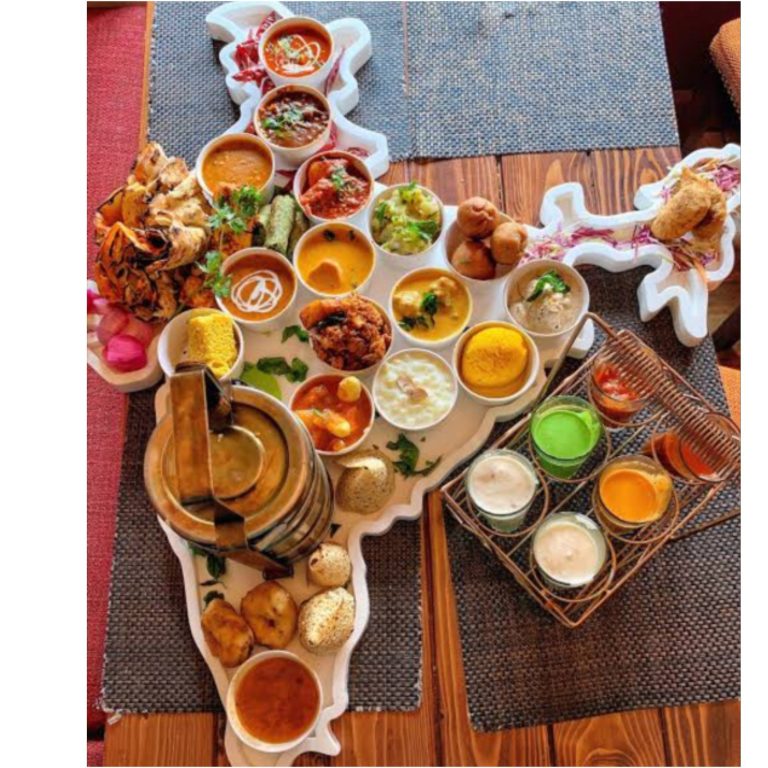By Vikas Deep Rathour, Executive Chef, The yellow chilli Georgia, USA
Culinary tourism has emerged as a significant trend, enticing travelers worldwide to explore destinations through their unique cuisines and gastronomic experiences. India, with its diverse culinary heritage and rich tapestry of flavors, stands at the forefront of this global phenomenon. From aromatic spices and savory street food to elaborate regional cuisines, India offers a tantalizing journey for food enthusiasts seeking authentic culinary encounters.
Diverse Culinary Heritage
India’s culinary landscape is as diverse as its cultural tapestry, reflecting a kaleidoscope of flavors, ingredients, and cooking techniques passed down through generations. Each region boasts its own distinct culinary traditions, shaped by geography, climate, history, and cultural influences. From the fiery curries of the north to the fragrant biryanis of the south, and the seafood delights of the coastal regions to the vegetarian delights of Gujarat and Rajasthan, India offers a myriad of culinary experiences waiting to be savored.
 Growing Global Appeal
Growing Global Appeal
In recent years, Indian cuisine has gained widespread recognition and popularity on the global stage, thanks to the proliferation of Indian restaurants, celebrity chefs, and food festivals worldwide. According to a report by the World Travel & Tourism Council (WTTC), culinary tourism contributes significantly to India’s tourism industry, attracting food-loving travelers from across the globe. The country’s vibrant street food culture, in particular, has garnered international acclaim, with cities like Delhi, Mumbai, and Kolkata hailed as gastronomic meccas for their diverse street food offerings.
Impact on Tourism Economy
Culinary tourism plays a vital role in driving tourism revenue and economic growth in India. According to data from the Ministry of Tourism, culinary tourists tend to spend more on dining and related experiences compared to other travelers, contributing to the local economy and supporting small-scale food businesses. Furthermore, culinary tourism encourages cultural exchange and fosters community engagement, as visitors interact with local chefs, food vendors, and artisans, gaining insights into the culinary traditions and lifestyles of different regions.
Challenges and Opportunities
While India’s culinary tourism sector holds immense potential, it also faces several challenges that need to be addressed to fully capitalize on its opportunities. Infrastructure development, hygiene and food safety standards, and promotion of lesser-known regional cuisines are areas that require attention to enhance the overall culinary tourism experience. Additionally, leveraging digital platforms and social media marketing can help showcase India’s culinary diversity to a global audience and attract food-loving travelers seeking authentic gastronomic adventures.
Future Outlook
Looking ahead, the future of culinary tourism in India appears promising, fueled by growing interest in food experiences and cultural travel. As the global travel landscape evolves post-pandemic, there is an opportunity for India to position itself as a premier culinary destination, offering immersive food tours, cooking classes, and farm-to-table experiences that showcase the country’s culinary heritage and agricultural abundance. With strategic investment, collaboration, and promotion, India can emerge as a leading player in the burgeoning market of culinary tourism, captivating the taste buds and imaginations of travelers from around the world.
Culinary tourism in India offers a tantalizing blend of flavors, aromas, and cultural experiences that appeal to food enthusiasts and travelers alike. With its diverse culinary heritage, growing global appeal, and potential for economic growth, India is poised to emerge as a powerhouse in the realm of culinary tourism, offering a delectable journey for those eager to explore the gastronomic wonders of the subcontinent.


